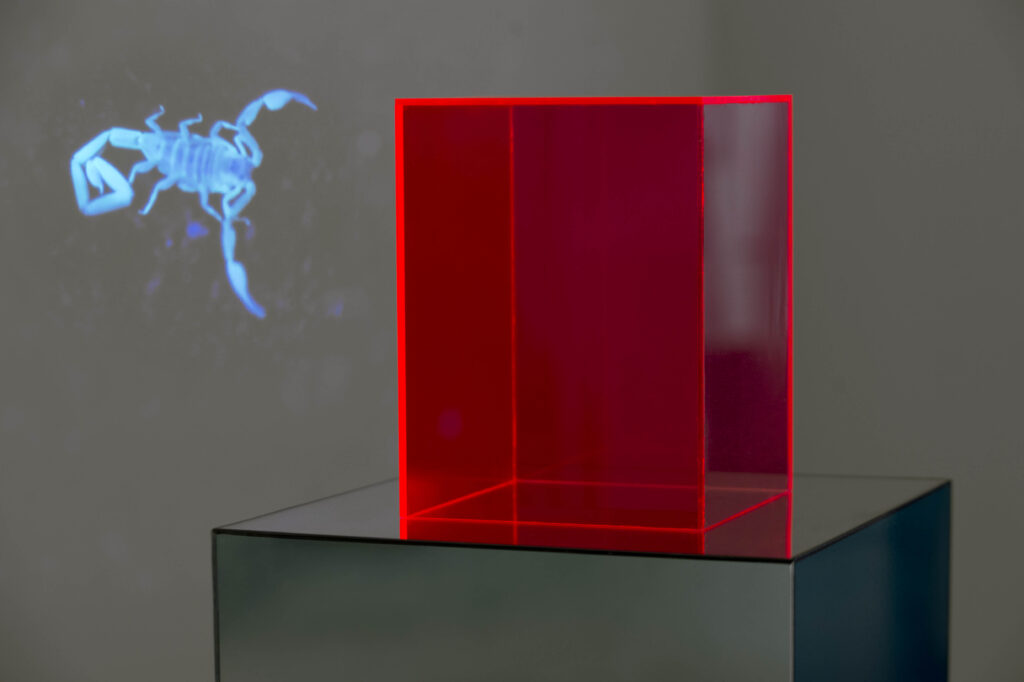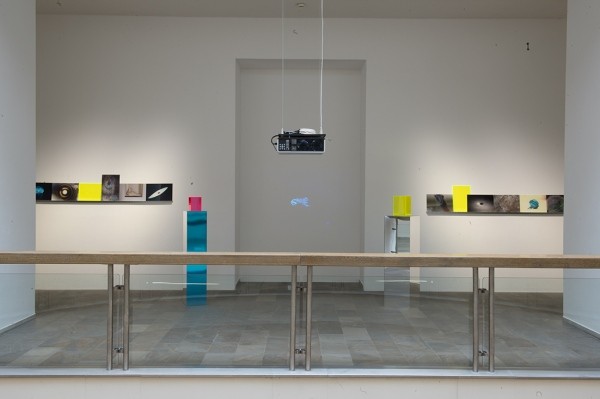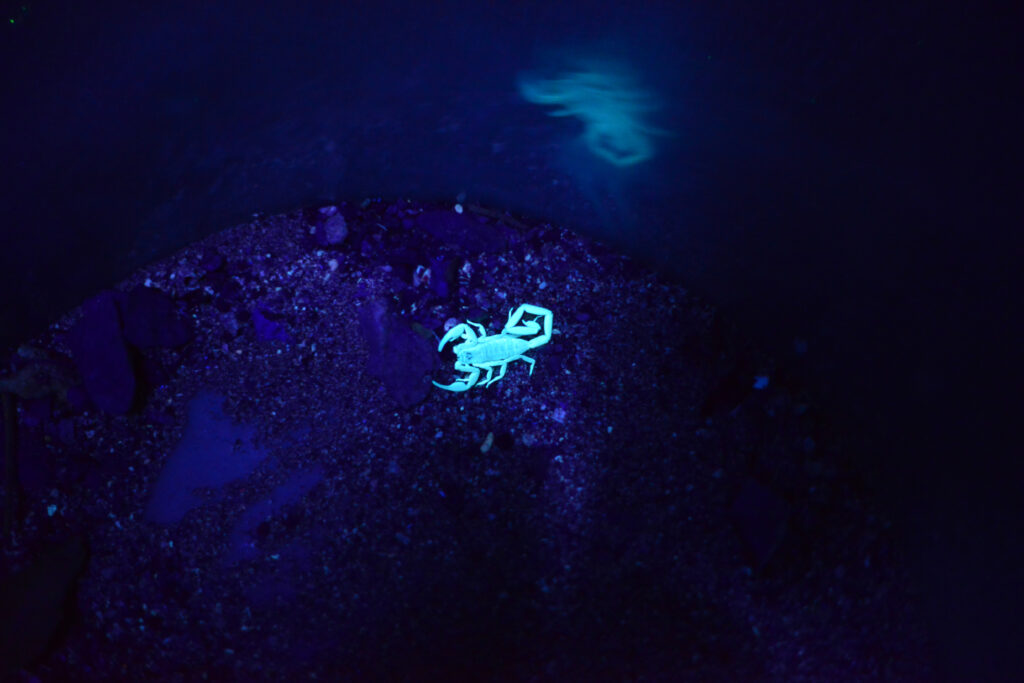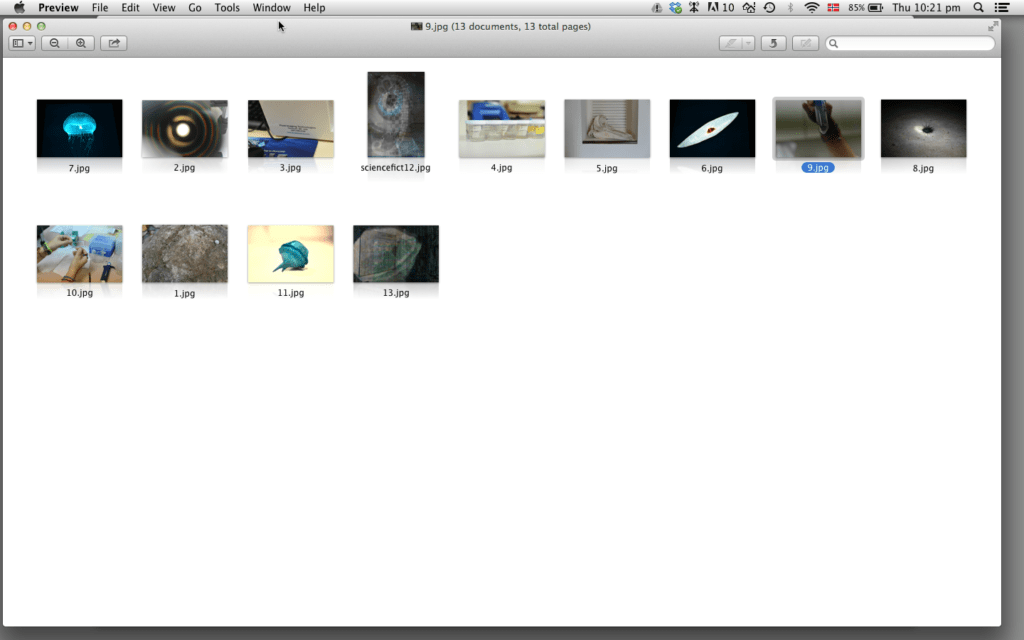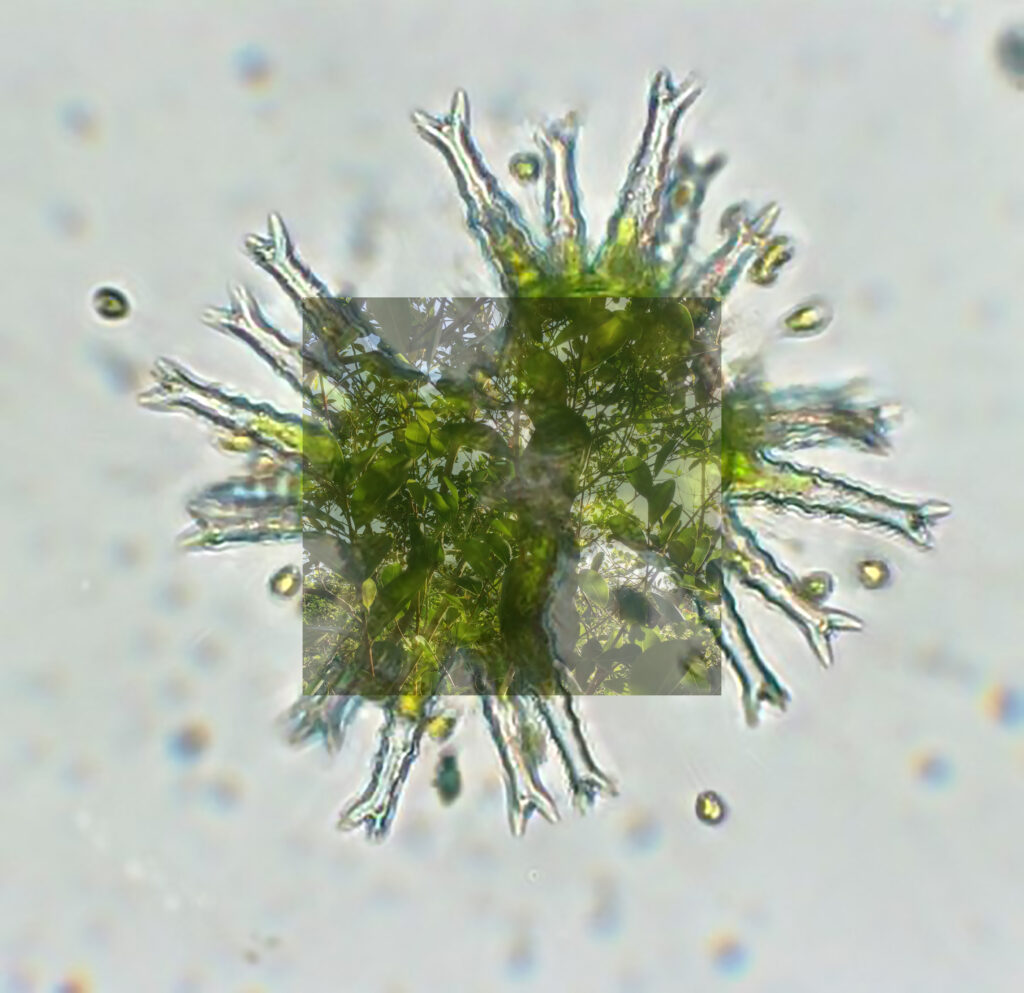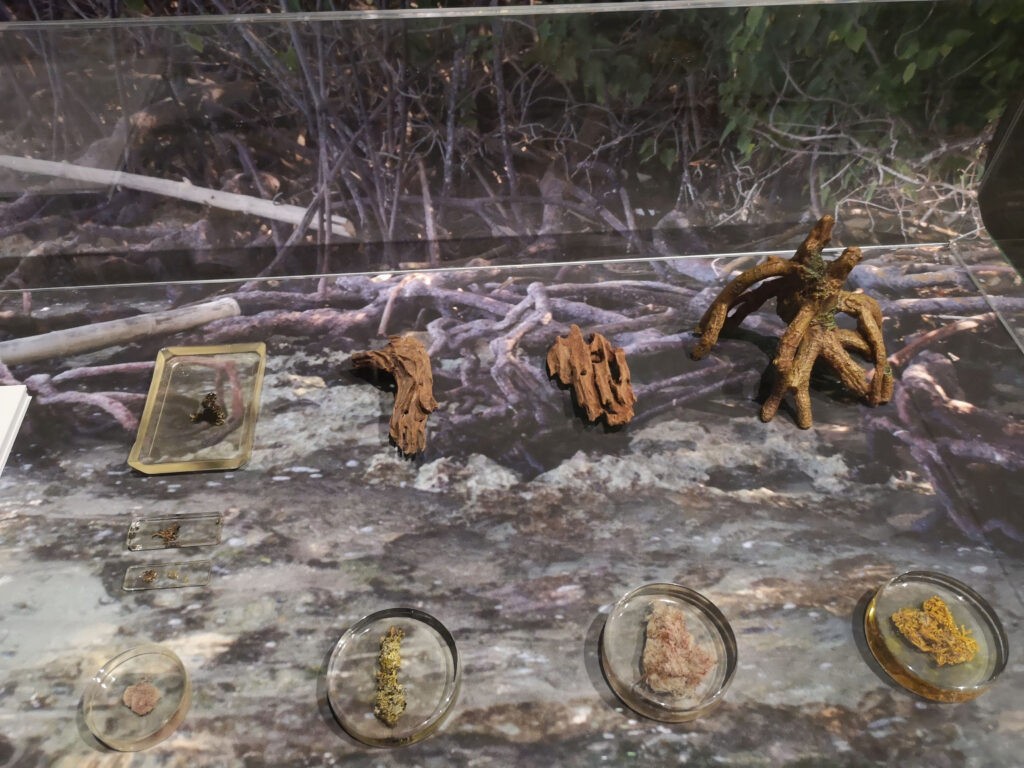In her piece immersion scorpio, Susanne M. Winterling presents video footage of a scorpion, framing this between two columns made of mirrors and neon-coloured acrylic glass. The images were recorded in a research lab exploring biofluorescence among marine life—a phenomenon that exists on a previously unknown scale. By virtue of their ability to absorb blue light of a certain wavelength and radiate it back in different glowing colours, certain marine life forms create a colour spectrum in the darkness of the ocean depths that has to date barely been researched. Given their formal similarity to the neon colours of the column, the black light video recordings of the scorpion bring to mind an animation. In actual fact, they show the perhaps millennia-old reality of our most audacious sci-fi visions. The immersion in the scorpion’s world confronts us with the inadequacy of our perceptual faculties and our knowledge of nature, whose phenomena and biodiversity we have at best identified and can only know in part. The pieces immersion scorpio und ecologies (micro level solidarity lab) reflect each other, creating precise and yet open references. Various themes from the photo series link the shots of the scorpion back to the exploratory research context: to the apparatuses and practices that are linked to the visibility of such phenomena as well as the technological advances the latter have spawned. In the context of the media and surfaces used—the video projection, the illuminated acrylic glass, the mirrors and the neon colours—we encounter the scorpion above all as a material manifestation of light. With her arrangement of the two works and the mirroring between the columns, Winterling creates a unique visual space showing that light is more than a chemical reaction. In the case of the scorpion, it may in fact separate entire visual worlds from one another.
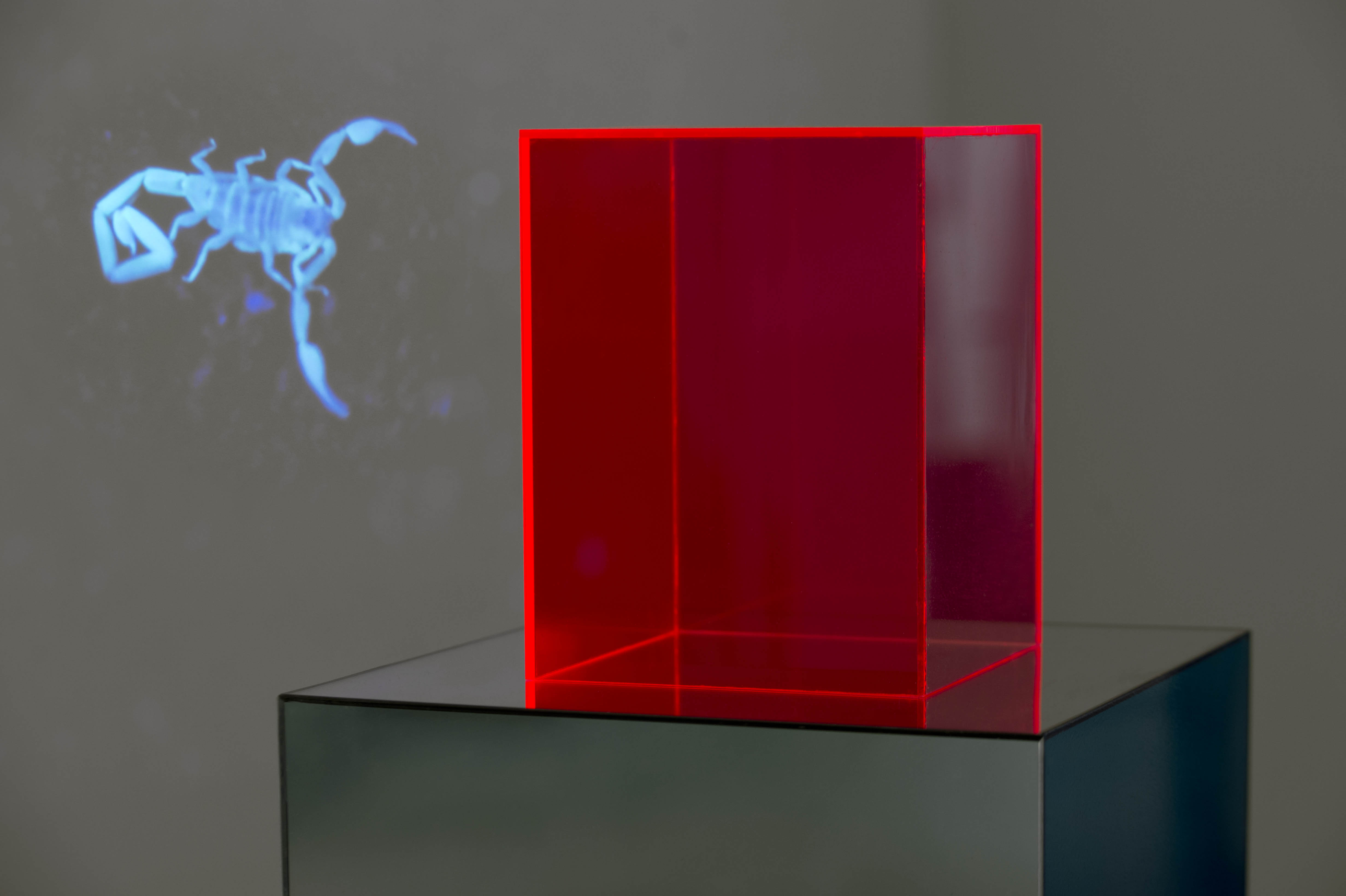
11 May - 17 Aug 2014
Fridericianum, Kassel


